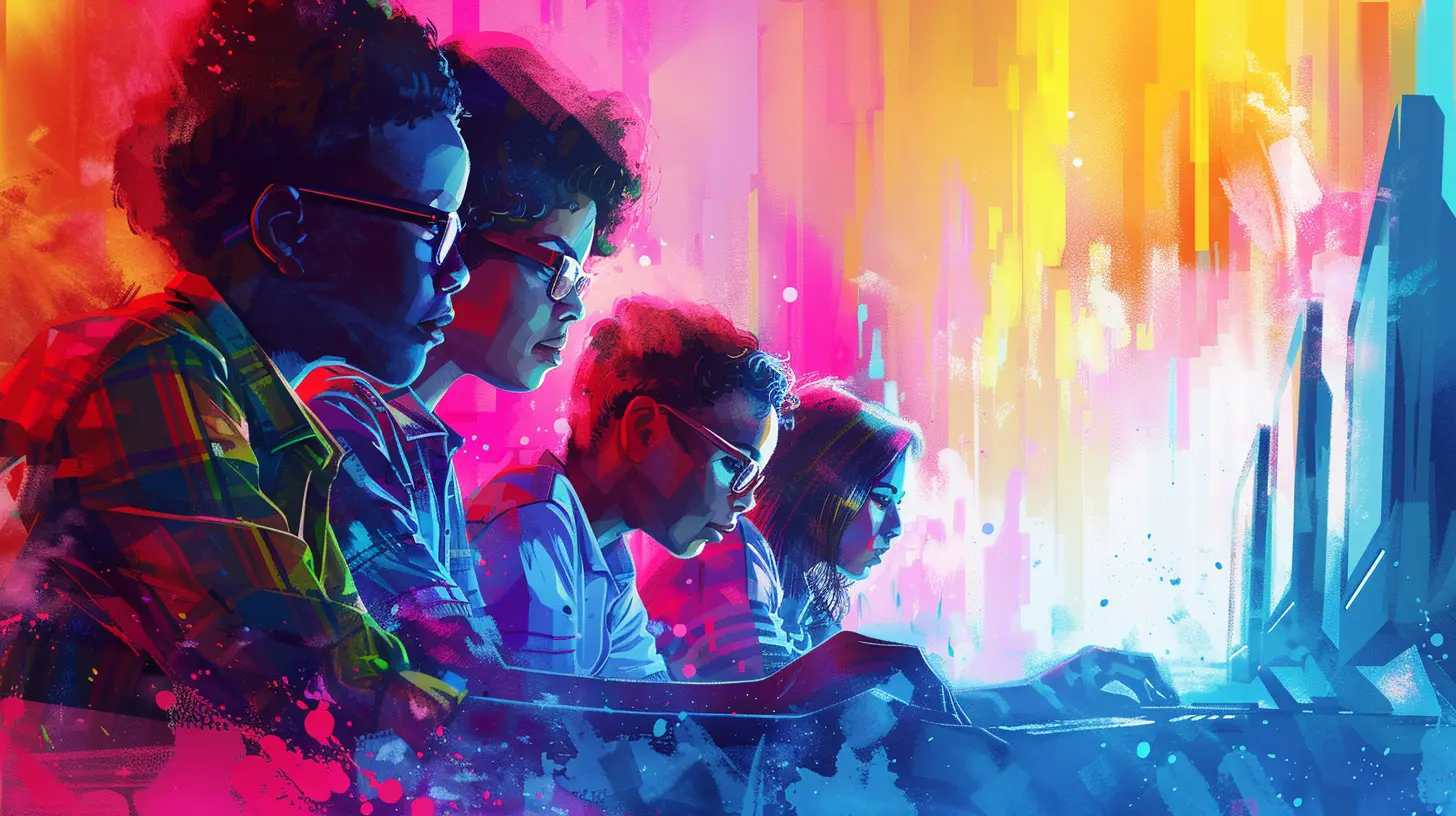How EdTech is Making Education More Inclusive for Students with Disabilities
6 July 2025
When we think about education, we often imagine classrooms full of students, chalkboards, and teachers at the front. But for many students with disabilities, that traditional setup can be full of obstacles—physical, cognitive, and emotional. Thankfully, we live in a digital age where technology isn’t just a bonus—it’s a game-changer. Let’s chat about how EdTech (short for Educational Technology) is tearing down those barriers and opening up doors for ALL students to learn, grow, and thrive.

Why Inclusivity in Education Even Matters
Before we deep dive into techy stuff, let’s get real for a second.Inclusive education isn't just a nice-to-have—it's a right. Every student, regardless of their physical or mental ability, deserves an equal shot at getting a quality education. Unfortunately, that's not always been the case. Historically, students with disabilities were often left out, misunderstood, or given fewer resources. But times are changing—and EdTech is leading that change.

The Big Picture: What Is EdTech?
In simple terms, EdTech is the use of technology to enhance learning. Think apps, online platforms, digital whiteboards, virtual classrooms, and even AI-powered tutors. It’s like having a digital toolbox that helps teachers and learners do things better, faster, and more creatively.But here's the kicker—when it comes to students with disabilities, EdTech does more than just make learning engaging. It makes learning possible.

Breaking Barriers: How EdTech Helps Students With Disabilities
Let’s unpack some real ways EdTech is leveling the playing field.1. Assistive Technology: Giving a Voice to the Voiceless
Have you ever tried using voice-to-text on your phone? That’s a small example of assistive tech in action.For students with mobility issues, speech impairments, or learning disabilities, assistive tech is a lifeline. Tools like:
- Screen readers (e.g., JAWS or NVDA)
- Speech-to-text software (like Dragon NaturallySpeaking)
- Text-to-speech tools (such as Natural Reader or Read&Write)
- Braille displays and keyboards
These tools give students the flexibility to learn in ways that match their needs. It’s like giving them a set of keys to access a world previously locked.
2. Personalized Learning: One Size Doesn’t Fit All
No two students learn the same way—especially when disabilities are involved. EdTech platforms now offer personalized learning paths tailored to each student’s pace and ability.Whether it’s:
- Adjusting the reading level of an article,
- Slowing down video playback speed,
- Or using gamified modules to reduce cognitive overload,
These platforms respond to the student, not the other way around.
It’s learning, but on their terms.
3. Remote Learning: Learning Beyond the Classroom Walls
Remember the COVID-19 lockdowns? They forced schools to go digital—and while it was a tough period for most, it had an unexpected upside for students with disabilities.Remote learning eliminated physical barriers: No more navigating stairs or long hallways, no sensory overload from crowded classrooms. Instead, students could study in a comfortable environment, with all the digital tools they needed.
EdTech made that possible—and it’s still a powerful option today for students who thrive better at home.
4. Real-Time Captioning and Subtitles: More Than Just Words
Think captions are just for when you forget your headphones? For students who are deaf or hard of hearing, captions and subtitles are essential.Platforms like Zoom or Google Meet now offer real-time captioning, enabling smoother communication during live classes. For recorded lectures, automatic subtitle generation helps students replay lessons at their own pace.
It’s not just convenience—it’s accessibility.
5. Visual Learning Tools: Because Seeing Is Believing
Students with cognitive or developmental disorders like autism often benefit from visual learning methods.EdTech tools such as:
- Interactive diagrams
- Infographics
- Digital mind maps
- Visual storytelling apps like Book Creator
These visual aids help process complex ideas in a simpler and more digestible way. It's like turning fog into clarity.
6. Augmented & Virtual Reality: Immersive, Inclusive Learning
Virtual reality (VR) isn’t just for gamers. In education, VR and Augmented Reality (AR) allow students with disabilities to experience things that would be difficult in real life.Imagine a student in a wheelchair going on a virtual field trip to a volcano's crater or a blind student exploring the human body through tactile VR. These tools bring learning to life—no travel, no limits, just possibilities.
7. AI-Powered Tutors and Chatbots: 24/7 Help on Demand
Need help solving a math problem at midnight? AI to the rescue.AI-driven chatbots and tutoring apps like ScribeSense and Carnegie Learning are transforming the way students receive help. For students with disabilities who may need repetition or extra time, these tools are a godsend. They can ask questions as many times as needed—without feeling judged or rushed.

Teachers + Tech = A Winning Combo
Let’s not forget the educators in all this. Tech can only go so far without the people behind it. Thankfully, EdTech also equips teachers with better tools to support students with disabilities.Here’s how:
- Analytics dashboards help track a student's progress in real-time.
- Digital IEP tools (Individualized Education Plans) streamline accommodations.
- Professional development platforms train teachers on inclusive tech usage.
So not only are students empowered, but teachers are too.
Real Stories, Real Impact
Let’s make this real. Meet Maya.Maya is a 10-year-old student with dyslexia. Reading used to feel like climbing a mountain for her. But then her school introduced an app that reads aloud and highlights each word simultaneously. Suddenly, reading turned into a fun game, and Maya started gaining confidence.
Or take Leo, a high schooler with cerebral palsy. Using eye-tracking software, he writes essays and participates in class discussions—all hands-free.
These aren't just cool stories. They're proof that EdTech is changing lives.
Challenges on the Road to Inclusion
Okay, let’s not sugarcoat things. EdTech isn’t a magic wand. There are still challenges:- High costs of some advanced assistive tools
- Lack of awareness or training among educators and parents
- Internet accessibility in rural or low-income areas
- Software compatibility across devices
But here’s the deal—awareness is growing, governments are stepping in to fund initiatives, and companies are making more affordable, open-source tools. The future is promising.
The Road Ahead: What's Next for EdTech and Inclusion?
So where do we go from here?The EdTech landscape is evolving fast. Here’s what we can expect:
- More AI and machine learning to personalize learning even more precisely.
- More user-centric design, ensuring software is built with accessibility in mind from the start.
- Bigger focus on universal design, meaning tools are made for everyone—not just for "typical" students.
- Cross-device integration, so learning isn’t tied to one device or platform.
Imagine a future where every student—regardless of their ability—has a personal AI tutor, tools customized to their learning style, and a global network of support. That’s not a pipe dream. It’s becoming reality.
Final Thoughts: Inclusion Isn’t Optional—It’s Essential
At its core, education is about unlocking potential. EdTech is helping us reach keys that were once out of reach for students with disabilities.Inclusivity isn’t about giving students with disabilities a handout—it’s about giving them a fair shot. And thanks to modern educational technology, we’re finally moving in that direction.
So, whether you're a teacher, parent, student, or just someone who cares about equal rights—you’ve got a role to play. Embrace the tech. Push for change. And celebrate every win, big or small.
Because every student deserves a seat at the table—and maybe a tablet in their hand.
all images in this post were generated using AI tools
Category:
Educational TechnologyAuthor:

Zoe McKay
Discussion
rate this article
1 comments
Sara Daniels
This article beautifully highlights the crucial role of EdTech in fostering inclusivity for students with disabilities. It’s inspiring to see how technology can empower diverse learners and create a more equitable educational landscape for all.
July 30, 2025 at 10:23 AM

Zoe McKay
Thank you for your thoughtful comment! I'm glad you found the article inspiring and that it resonates with the vital impact of EdTech on inclusivity for students with disabilities.


